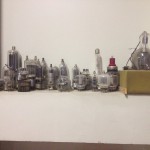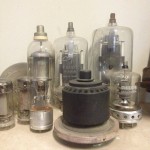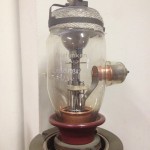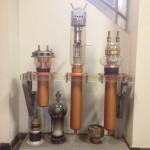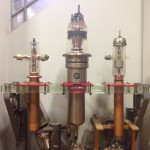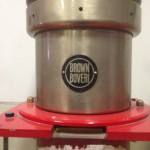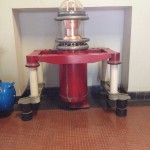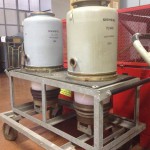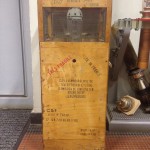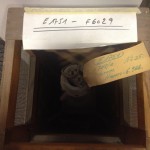
Author: Steve Engel
Electrical transmission tubes, used in short, medium and long waves antennas, play a vital part to power the huge transmitters of a station. At the dawn of the German occupation, an act of resistance prompted to hide the tubes of the long wave antenna in Junglinster in order to hamper the Nazis’ use of the station.
Tubes in Junglinster have been of the most powerful in Europe until the end of the 1960’. Although being mostly replaced at the end of the century, they do resist to today’s technology by playing a minor but vital role in broadcasting.
Throughout generations tubes of different types, shapes, ages and locations have been collected by the employees of the Junglinster site. Although not being part of a state funded museum, the gathered tubes form a little ‘museum’ inside the control room.
Contents
Sources:
| Eugène Muller, head of Radio and TV transmissions for RTL’s Broadcasting Center Europe, on electrical transmission tubes during the second world war, on their role today and on the little ‘museum’ inside the Junlinster control room. |
Source: University of Luxembourg
| The little ‘museum’ inside the Junglister transmission site: |
Literature:
“Funkstille, Propaganda, Zerstörung. Die Sendeanlagen während des Krieges.” Ons Stad, no. 106 (2014): 16-17 (accessed on January 20, 2016).
Interview with Eugène Muller.
Jacques Maurel, “Voici la nouvelle station de T.S.F. de Luxembourg, l’une des plus puissantes d’europe.” La science et la vie, no. 195, September 1933.
“Les nouvelles installtion de Radio-Luxembourg et Télé-Luxembourg.” Le Haut-Parleur ,no. 968 (June 15, 1955): 7-9.
Further Reading:
For more technical information one kind of transmission tube technology at the dawn of the second world war: “RCA air-cooled transmitting tubes.” Technical Manual TT3, U.S.A. 1938 (accessed on February 11, 2016).
Author: Steve Engel

